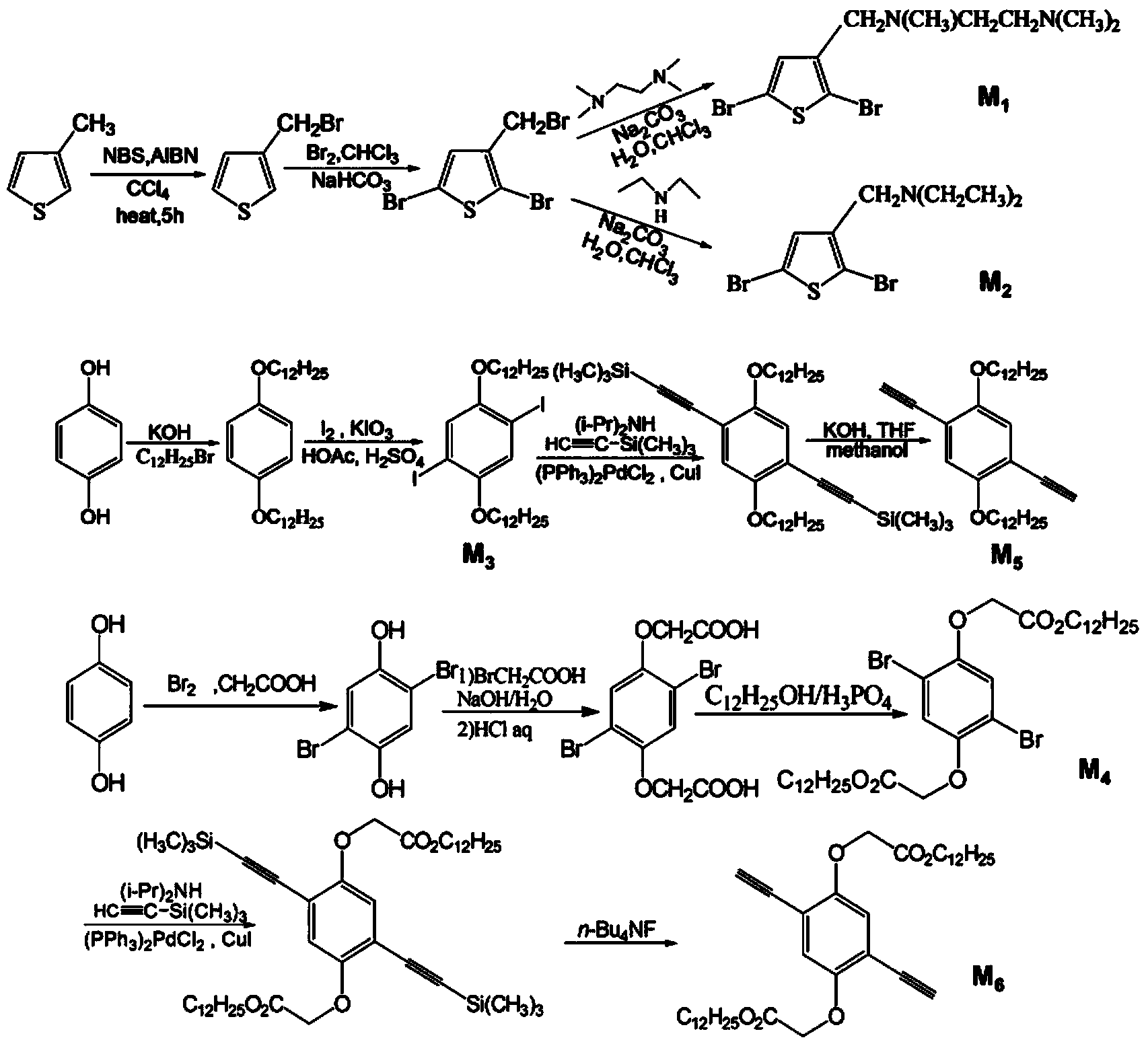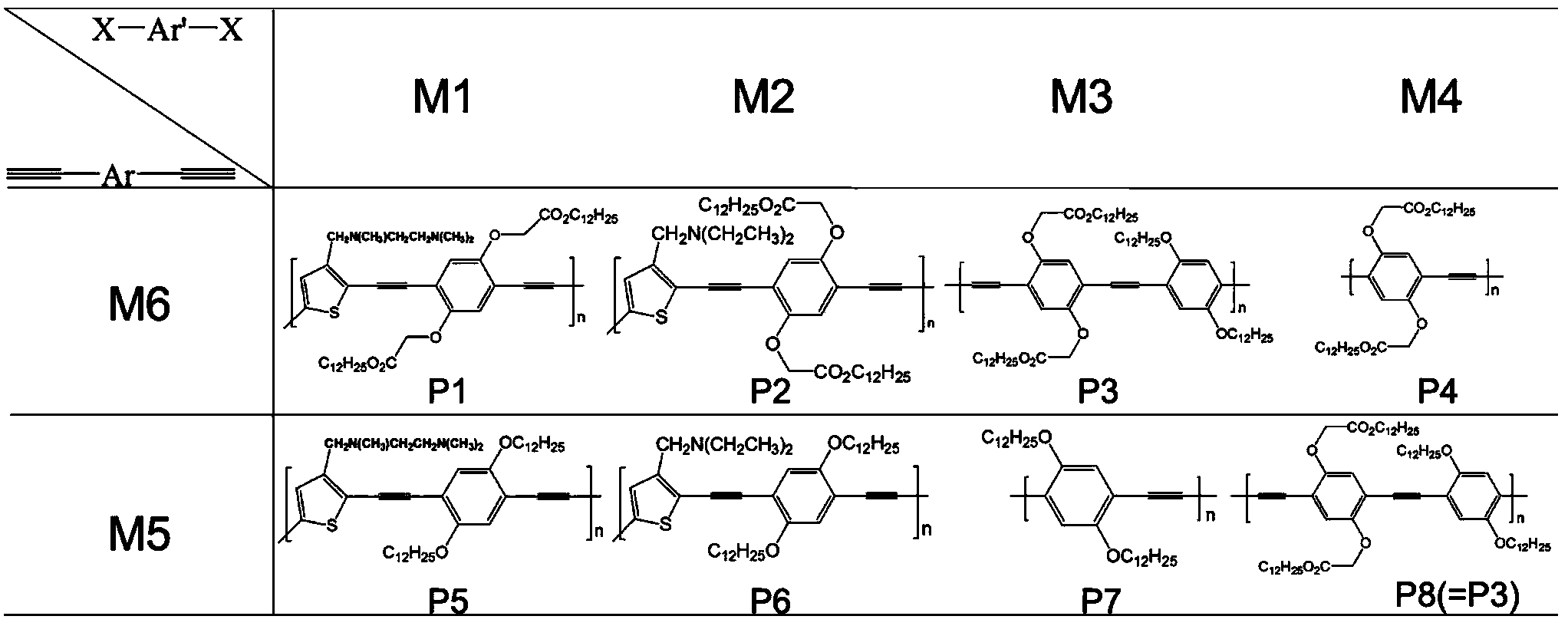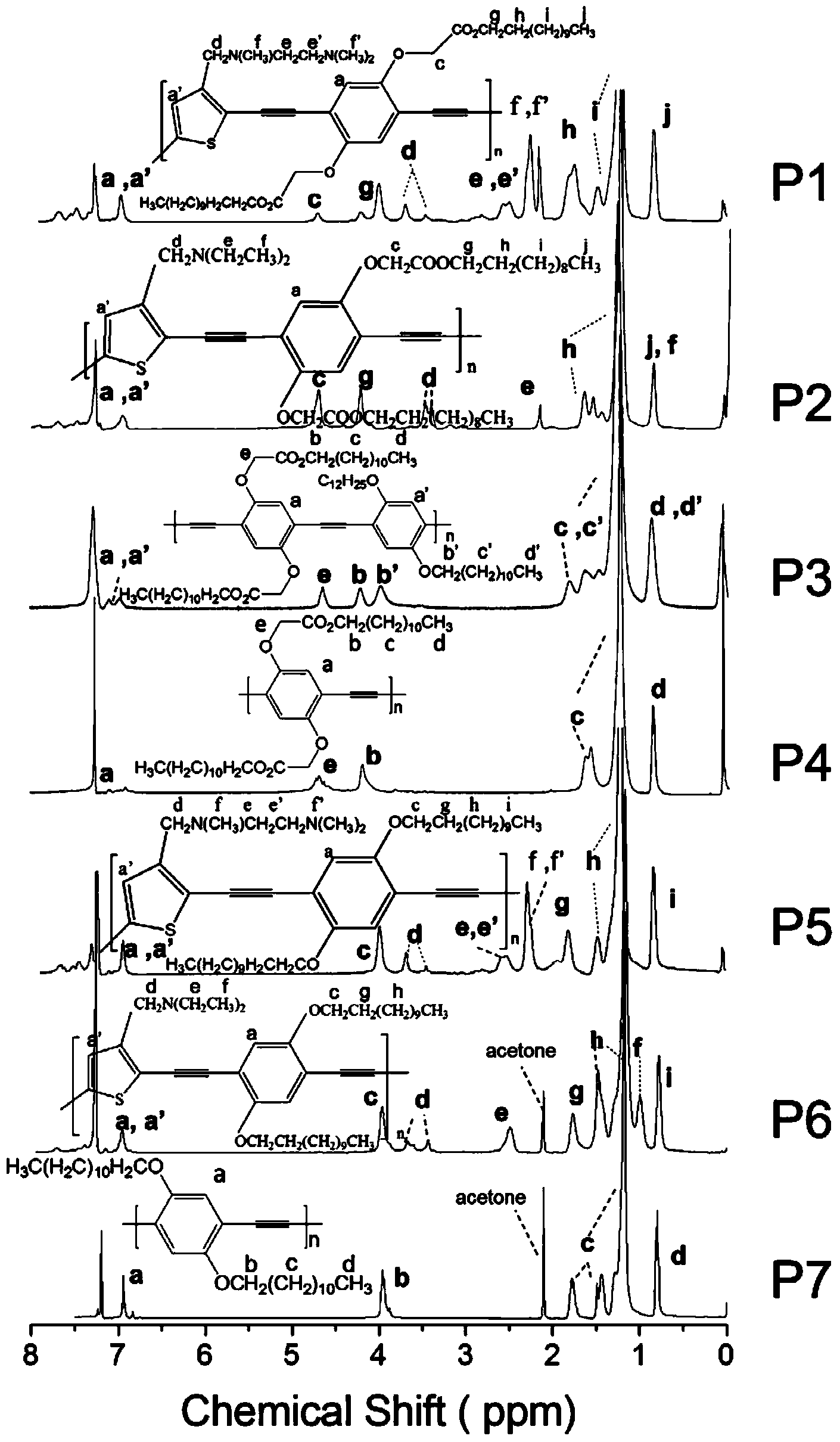Fluorescent sensor array based on conjugated polymers and application thereof
A conjugated polymer and fluorescent sensor technology, which is applied in the field of conjugated polymer-based fluorescent sensor arrays and achieves good application prospects and simple ion detection effects.
- Summary
- Abstract
- Description
- Claims
- Application Information
AI Technical Summary
Problems solved by technology
Method used
Image
Examples
Embodiment 1
[0037] In this example, the method of combinatorial chemistry is used to prepare conjugated polymer materials through parallel reaction conditions. See attached figure 1 and 2 , figure 1 It is the structural formula and synthetic route diagram of monomers required for the preparation of conjugated polymers provided by the examples of the present invention; figure 2 It is the structural formula of seven kinds of conjugated polymers prepared by combinatorial synthesis methods provided in the examples of the present invention.
[0038] Preparation of P1: Add monomer (M1) N-(2,5-dibromothiophen-3-ylmethyl)-N,N,N′-trimethylthane-1,2-diamine (0.356 g) to a dry two-necked flask, Monomer (M6)2,5-bis(dodecyloxycarbonylmethoxy)-1,4-diethynylbenzene (0.611 g), (PPh 3 ) 4 Pd (58 mg) and CuI (20 mg). Fill the bottle with argon and evacuate it several times. Under the protection of argon, quickly add 4ml of diisopropylamine and 20ml of tetrahydrofuran after distillation and drying. ...
PUM
 Login to View More
Login to View More Abstract
Description
Claims
Application Information
 Login to View More
Login to View More - R&D
- Intellectual Property
- Life Sciences
- Materials
- Tech Scout
- Unparalleled Data Quality
- Higher Quality Content
- 60% Fewer Hallucinations
Browse by: Latest US Patents, China's latest patents, Technical Efficacy Thesaurus, Application Domain, Technology Topic, Popular Technical Reports.
© 2025 PatSnap. All rights reserved.Legal|Privacy policy|Modern Slavery Act Transparency Statement|Sitemap|About US| Contact US: help@patsnap.com



